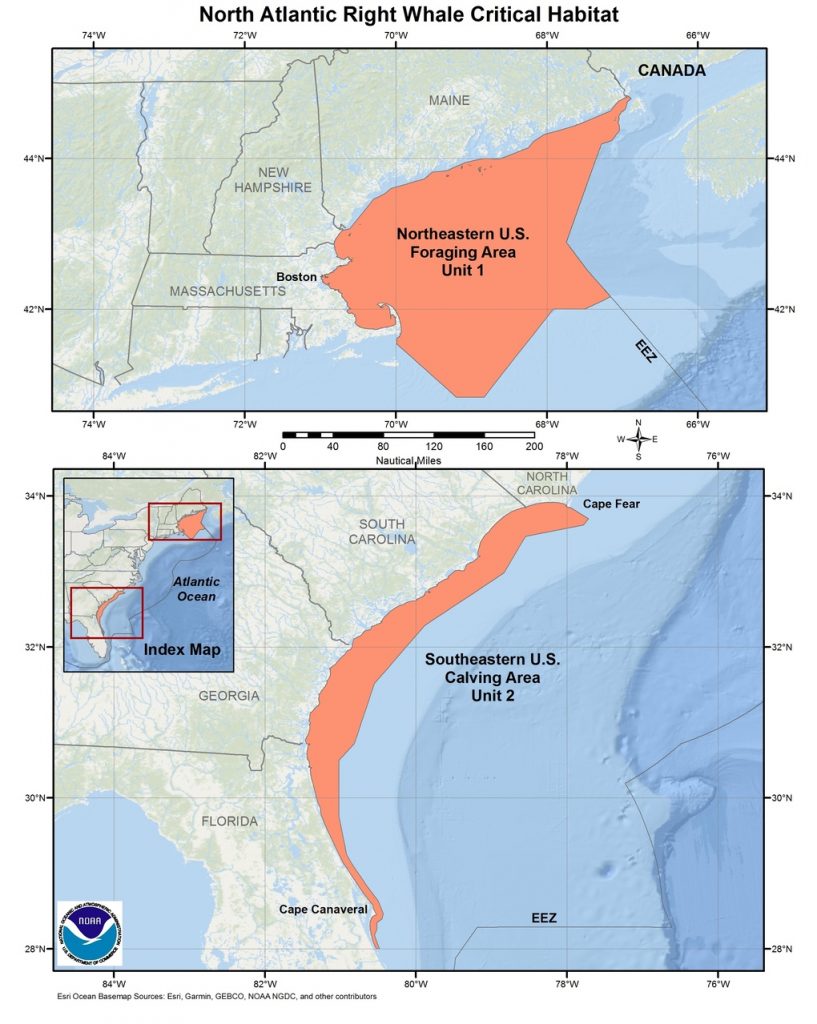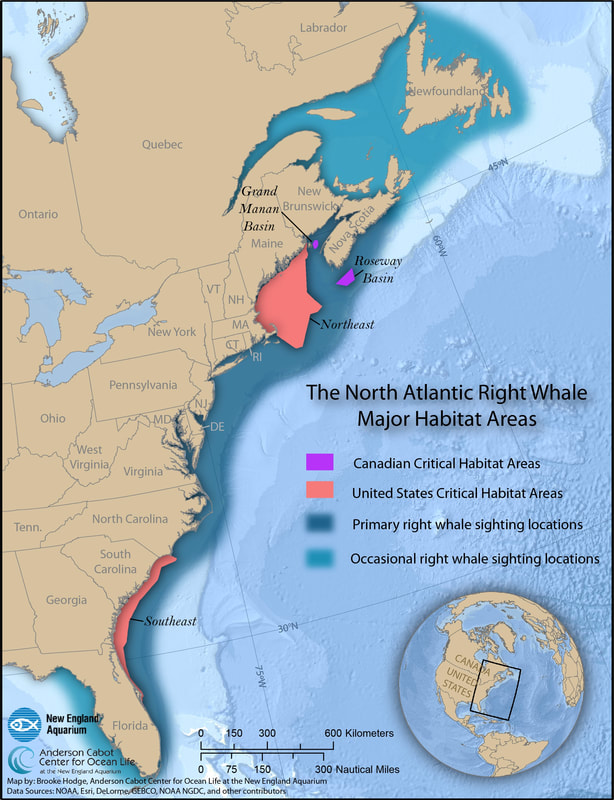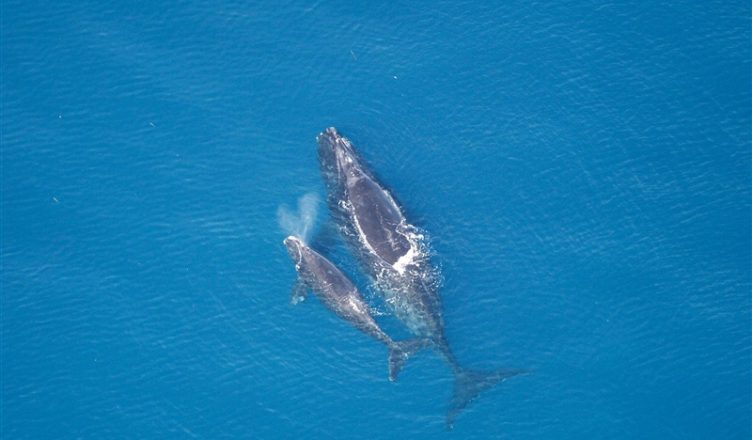Above photo: A female North Atlantic right whale and her calf on the move. Once a calf is born, a mother’s pace must slow to keep pace with her little one. Image from NOAA Photo Library, NOAA/NMFS NOAA News.
What animals do you think of when you hear the word migration? Birds flying south for the winter? The multi-generational movements of monarch butterflies? Or maybe massive herds of wildebeests roaming the African savannah in search of food and water? Many animals migrate seasonally, annually, or across multiple years. The North Atlantic right whale is one of many animals that migrates seasonally, and it is important to protect both of the key areas they travel to, and areas in between.

The North Atlantic right whale feeds in the phytoplankton-rich waters of the Gulf of Maine, the Gulf of St. Lawrence, and the Bay of Fundy. They also mate in these waters, with groups of males courting a single female in a wonderful surface-active group (see video below). Right whales of both sexes can be found in these cooler waters in spring, summer, and fall.
Where Do Right Whales Go in the Winter?
In the winter, female right whales travel to the warm waters off the coasts of North and South Carolina, Georgia, and Florida. When a right whale is born, it hasn’t built up an insulating layer of blubber, and cannot survive in the cold waters of the feeding grounds. Female right whales become pregnant up north, and after a 10-12 month gestation period, they calve in the warm waters down south. Here, the calf will feed on its mother’s milk (which is the consistency of cottage cheese) until it is ready to make the journey back up to the feeding/mating grounds. The journey is over 1000 miles, and females travel this distance both while pregnant and with their calves. If a female North Atlantic right whale lives a long, healthy life, she will take this journey every three to five years over the course of her reproductive life, which could be 50 years or more!

Threats to Right Whales
The path between the mating/feeding and calving grounds is no walk in the park. Along the way, a mother and her calf face many threats. These included vessel strikes, entanglement, attacks from orcas or other predators, and even curious humans itching to see a baby whale. It is important to remember that while all baby animals are cute, they need their space. Mother-offspring bonding is very important in mammals, and a whale calf is entirely dependent on its mother for food.
What’s the longest you have ever traveled with a child? Do you think you could protect them while walking 1000 miles? How about if you both faced some of the threats a right whale mother and calf face? Let us know your thoughts in the comments and stay tuned for how you can help us in our mission to celebrate the North Atlantic right whale!
Learn More:








